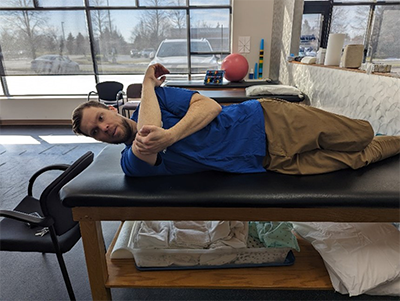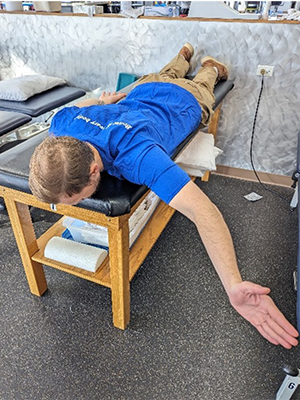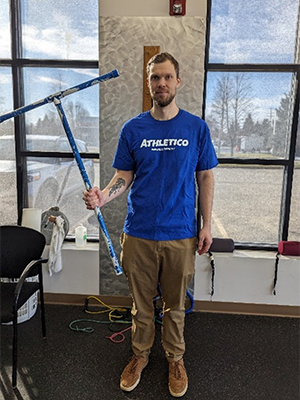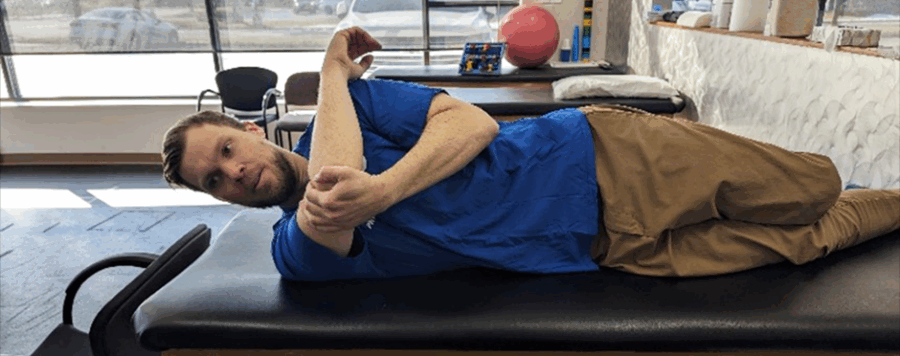While we’re filling our bellies with holiday cookies and taking that much-needed break from throwing, giving our arm the TLC it deserves after carrying us through the season is important. In fact, the best gift we could give our arm is a comprehensive arm care program.
What Is an Arm Care Program?
So, what is an arm care program? An arm care program not only prepares the arm to throw but prepares the arm to tolerate repetitive stress for the entire season and reduces arm fatigue and injury. An arm care program may look a little different at various points of the year.
For players to maximize their performance, their off-season training should include strength training, throwing and mechanics, and arm care. Equal attention should be placed on all these. The main goal of an arm care program during the off-season is to prepare the arm to throw and lay a foundation of good arm care that should be carried throughout the season. There will be more emphasis on building muscle and progressing performance in contrast to in-season when the emphasis is more on maintenance.
What Does It Look Like?
There are several components to a comprehensive arm care program, and each should be given careful attention. It is recommended to be performed three times a week during the off-season to increase strength.
Mobility
An easily overlooked component of arm care programs is maintaining muscle mobility and reducing loss of motion that typically occurs following throwing. This typically includes stretches for commonly tight muscle groups such as pecs, lats, and shoulder internal rotators. Some of these stretches include a crossbody stretch or sleeper stretch, corner stretch for pec, and overhead lat stretches. Another way to promote mobility is self-mobilization with foam rollers, lacrosse balls, or other self-release tools.

Rotator Cuff and Shoulder Blade Strengthening
You need a stable base to tolerate the immense stress throwing puts on the body. To do so, both the muscles of the shoulder blade, which connect the arm to the core, and the rotator cuff muscles, which stabilize the shoulder, need to be strong. This includes commonly used exercises such as banded internal/external rotation and prone Ts and Ys. During the off-season, the emphasis of these exercises will be building strength. This means that the 2-3 sets of 10 should be completed with a weight that causes near-fatigue, and the weight should be progressed as muscle is gained.

Don’t Forget the Forearm!
Both stretches and strengthening exercises are important further down the chain as well. Wrist and elbow stretches reduce tension in the medial elbow, a common site for elbow injuries in the overhead athlete. Wrist extension and pronation/supination strengthening should be incorporated into any arm care program to bring the arm to fatigue.

How Can You Get Started?
Many well-studied examples of arm care programs assist in building the foundation of a good and consistent arm care program. The Thrower’s Ten is a widely used program that is easy to adapt and easily accessed online. It requires only dumbbells and bands of various resistance. While there are many others, the most important considerations are what works best for your throwing needs and what will motivate you to continue.
So, give yourself (and your arm) the gift of a good arm care program this off-season. Find what works best for you and get to work! It will only make you a better player and reduce your risk of injury throughout the season. If you are injured or would like to learn more about improving your strength and mobility, please reach out to your local Athletico and schedule a free assessment today. Free assessments are available in-clinic and virtually through our telehealth platform.
*Per federal guidelines, beneficiaries of plans such as Medicare, Medicaid, Tricare, VHA and other federally funded plans are not eligible for free assessments.
The Athletico blog is an educational resource written by Athletico employees. Athletico bloggers are licensed professionals who abide by the code of ethics outlined by their respective professional associations. The content published in blog posts represents the opinion of the individual author based on their expertise and experience. The content provided in this blog is for informational purposes only, does not constitute medical advice and should not be relied on for making personal health decisions.

 width="900"
height="356"
>
width="900"
height="356"
>
